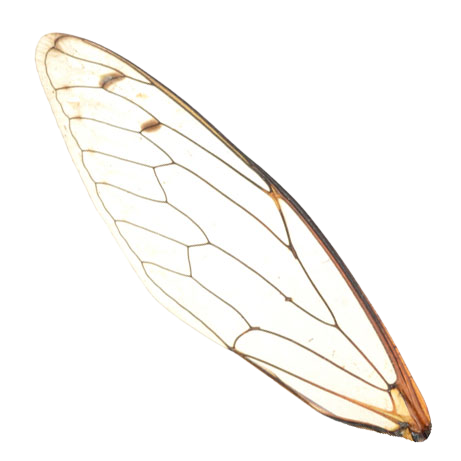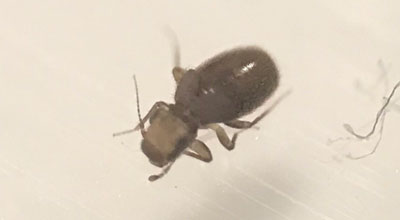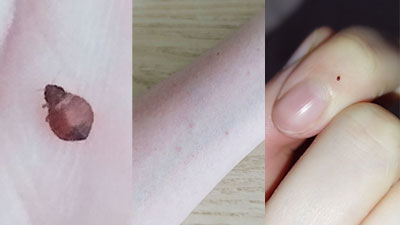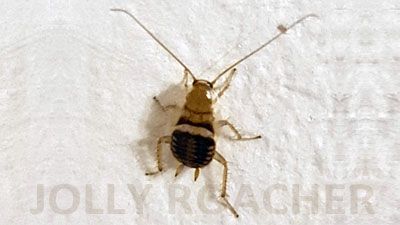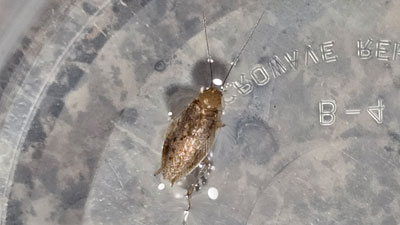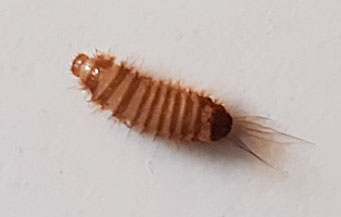This is the case when photos and videos of arthropods sent to me by the viewer can rightly be called gorgeous. Look how well tropical rat mites of all ages are visible here:
The history of these footages was perfectly described by the viewer himself:
«We are constantly bitten by small beasts of some reddish-brown color up to 1 mm in size! I was not even too lazy to take a microscope and do a little study, because I did not find similar pictures on the internet. All individuals are very small, about the size of a grain of sand, so it is very difficult to see them. They move slowly, bite all over the body (except the head), mainly in the legs, arms and belly. We found them one by one under the clothes and in the bed.»
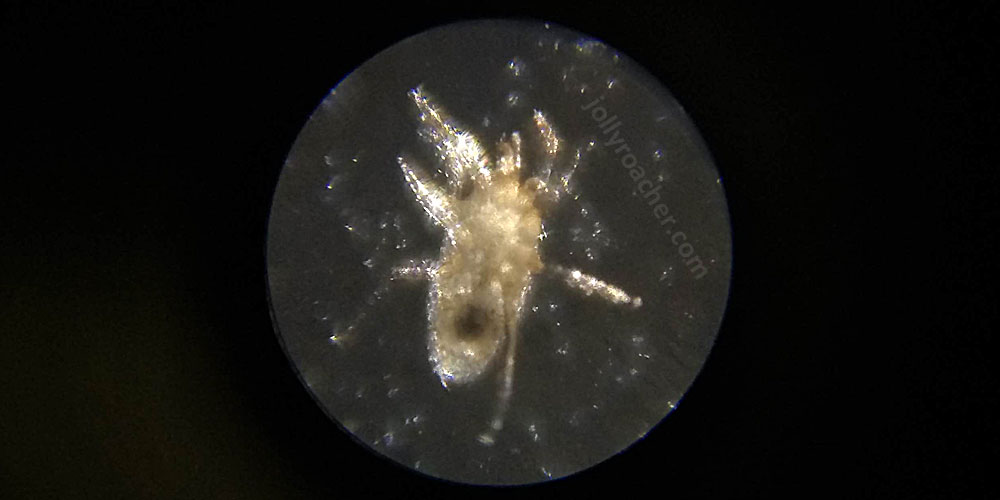
I told him that his footages showed gamasid mites, most likely tropical rat mites, but possibly mouse mites, or even some other species. After that he contacted the local municipal pest control service, whose representatives “told me that by the description these are most likely rat mites. A month ago, my family and I moved to an apartment on the first floor of a brick 9-storey house built somewhere in the 80s. And the service officer added that it was necessary to take actions in the basement (deratization, removal of dead rodents, disinfection) and extermination of parasites in the apartment”.
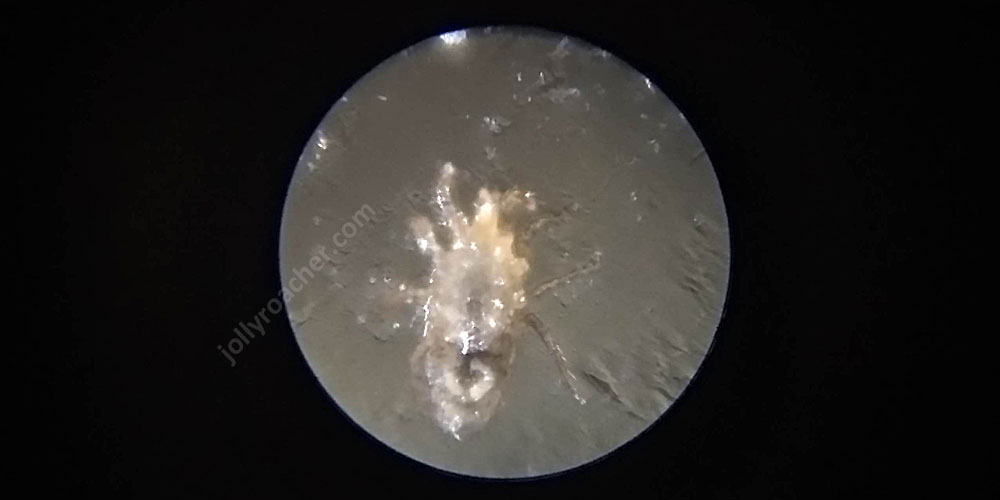
These clarifications put everything into its place and it became clear that these were indeed tropical rat mites. But let’s go through it in order to make clear to you, how you could identify the parasites yourself in the same case.
How to recognize that we are looking exactly at mites?
First: it is clear that these are mites, because they all have 8 legs. Here are the 8 legs of an adult mite:
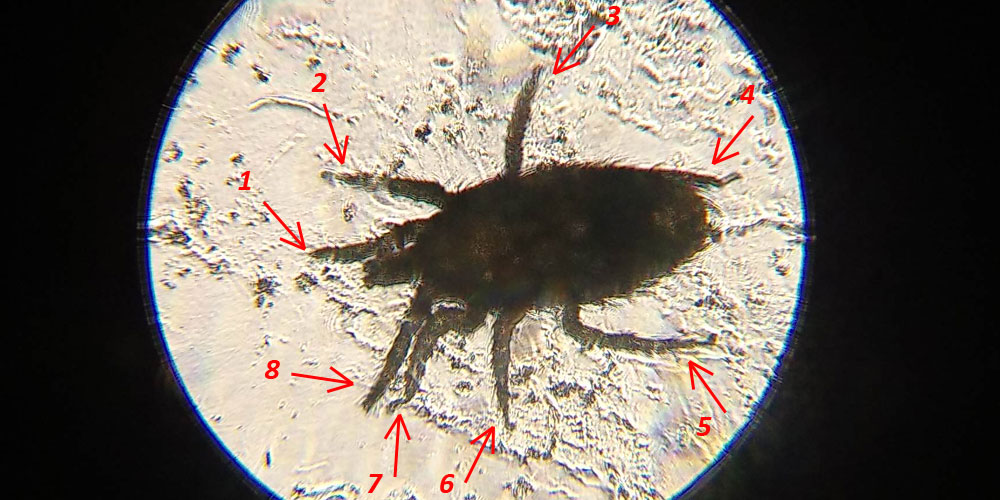
The smallest larvae of these mites have 6 legs, but they are extremely difficult to see (and of course much more difficult to count their legs) because of their tiny size.
And one more important point: the larvae of tropical rat mites do not suck blood and therefore do not attract attention.
The number of legs as a diagnostic feature is important because among all of the synanthropic arthropods, only mites and spiders have 8 legs. All insects have either 6 legs or no legs at all (for example, flea larvae), and other arthropods may have a different number of them, but not 8. For example, woodlice have 14 legs, centipedes may have several dozen, but exactly 8 legs carry only mites, ticks and spiders.
For example, here is a bed bug Oeciacus vicarius with its 6 legs:
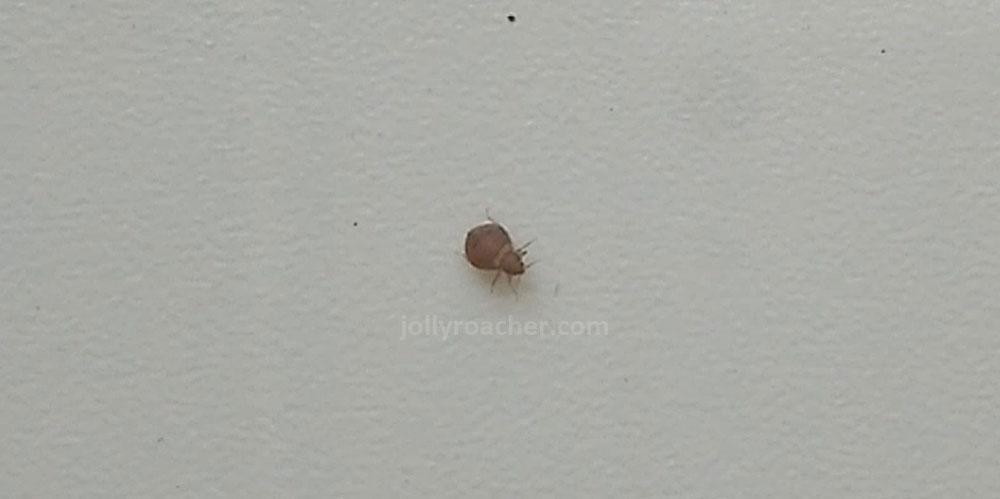
However, there are no known parasites among spiders. Therefore, the biting eight-legged creatures in the apartment are, in any case, some species of mites.
Note
Apart from mites, all synanthropic periodic parasites are only insects. So only mites with 8 legs or some insects with 6 legs can bite you in your house.
The second thing is size. The author pointed out that the parasites “are very small, about the size of a grain of sand”, and of creatures of such size only mites bite people in apartments.
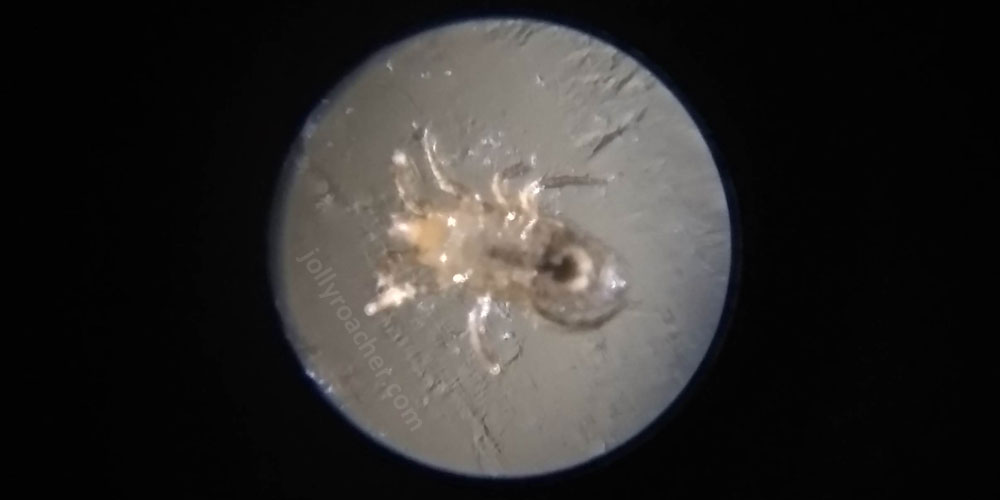
Actually, to eliminate parasites, it is enough to know only that they are mites, without going into details of their belonging to a particular family or genus. However, if you find out which group they belong to, it will be easier to look for their breeding sites and take measures to protect the apartment from their re-entry.
How to find out that we are dealing with exactly rat mites?
The main clue to determine the identity of these mites was given to me by the author of the video: on the first floors of apartment buildings appear mites that parasitize rodents – mice or rats – in their nests. In these nests, parasites reproduce in large numbers, and when the rats leave them or simply die, the mites spread throughout the premises in search of new feeders. In such searches, they can also crawl into apartments located on the first floors above the basements.
Representatives of another group of synanthropic parasitic mites are similarly attached to bird nests. They more often terrorize people on the upper floors of buildings, under attics, where pigeons, swifts and sparrows settle and breed.
Consequently, in the apartment on the first floor with a high probability appear exactly mites – parasites of rodents. In fact, there are many types of their species – there are rat mites, mouse mites, and some others. Moreover, some ticks that normally feed on birds can also parasitize rodents. But here it was the microscope that helped to recognize the parasites of rodents. Let’s look at the photo:

Here we see:
- Characteristic for rat mites body shape – somewhat elongated, with large, clearly visible chelicerae.
- A large number of hair-like bristles all over the body. They can only be seen through a microscope, but by them it can be distinguished from the chicken mite Dermanyssus gallinae – also very common, but less hairy.
- A not very noticeable “pattern” of intestines visible through the translucent coverings of the body. In bird mites of the genus Dermanyssus, such insides are much more visible. For example, look at the photos of chicken mites from another apartment:
Thus, videos and photos show one of the species of the genus Ornithonyssus. It is almost impossible to distinguish one species of this genus from another from photographs, so we can assume that these are either northern fowl mite Ornithonyssus sylviarum, or tropical rat mite Ornithonyssus bacoti, or even some other relative species.
The most common and often found in human dwellings is the tropical rat mite, so it is most likely the one in the photo. Although such a precise definition is not required – from the description of the situation, it is obvious that mites live in the basement, penetrate into the apartment from it, and this is exactly what needs to be taken into account when planning to get rid of them, regardless of what species they belong to.
And in order to get rid of them, you need to take disinfection in the apartment, in the basement, and then eliminate all the rodents in the basement and make such repairs there that new rats and mice cannot appear here.
If you find similar arthropods at home, but cannot identify them for sure, then send me their photos and videos. I think together we can figure out what they are and what to do with them.
